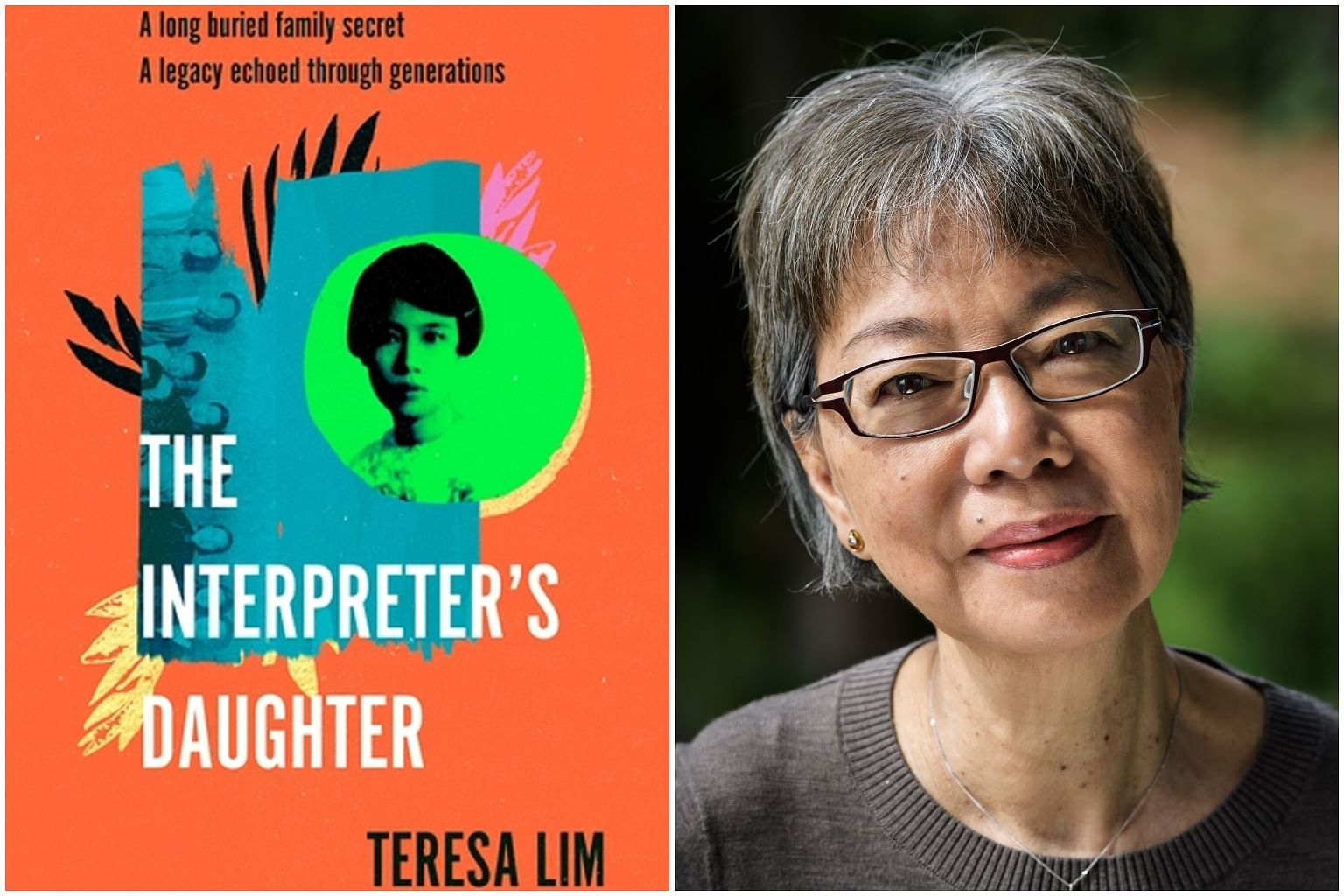Book review: The Interpreter's Daughter is a moving family memoir
Sign up now: Get ST's newsletters delivered to your inbox

The Interpreter's Daughter, by Teresa Lim, goes back more than 1,000 years, tracing the author's ancestor.
PHOTOS: MICHAEL JOSEPH, LORENZO ALI
Follow topic:
The Interpreter's Daughter
This family memoir covers a lot of ground, going back more than 1,000 years to trace the author's ancestor and ending with the Japanese Occupation of Singapore.
It also offers a lot of historical facts and imagined scenes featuring conversations between characters long dead.
This is why it can be hard to get into the book - you cannot shake off the feeling that you are reading a history textbook "watching" re-enactments reminiscent of iconic 1980s Channel 8 drama serial The Awakening.
For example, the author, Singaporean Teresa Lim, imagines the arrival of Lo Kuan-Yi, her great grandfather, his brother and father to Singapore: "The time has come, finally, to disembark. Law climbs out of the boat with his brother and father. All three clutch their possessions as they walk down the gangway."
The good news is the book picks up momentum when the action turns to 20th-century Singapore and gains urgency in the last third as the Japanese forces move towards Singapore. By then, you are sufficiently acquainted with the main characters to feel invested in their fate.
The book hits its stride when the author finally turns her focus to her great-aunt Fanny Law, the daughter of the interpreter in the title - after toggling between the China history lessons and the author's present-day musings in the first half.
Lo, Fanny's father, worked as an interpreter at the Chinese Protectorate in colonial Singapore before going successfully into business.
Fanny, his youngest child born in 1907, started primary school at age 17 and studied for a year at the University of Hong Kong in the early 1930s.
After her return to Singapore, she ignored the social conventions of her time to swear off marriage and earn her own living as a teacher.
Readers are also introduced to her siblings - sisters Virtue and Orchid, as well as brothers Cheng-Liang and Cheng-Wah.
The book is enriched by the many photographs of Fanny and her family members, taken in an era when most people left no photographic records.
Some of the passages depicting the material life of Singapore before World War II also make for fascinating reading: Cold Storage purchases, ballroom dancing at Raffles Hotel and Shakespeare shows at the Victoria Theatre.
The backdrop of war and the tragic ends awaiting two of the main characters inject pathos and urgency into the book's conclusion.
While there have been numerous stories, real and fictional, about how people in Singapore experienced the Japanese Occupation, the stories in Lim's memoir are no less moving or harrowing.
If you like this, read: Theatres Of Memory: Industrial Heritage Of 20th Century Singapore by Loh Kah Seng and Alex Tan Tiong Hee (Pagesetters, 2021, $32.10, buy here). This social history book offers a fascinating glimpse into the experiences of the men and mostly women who worked in the factories that sprouted up in Singapore after Independence.
This article contains affiliate links. If you buy through these links, we may earn a small commission.

